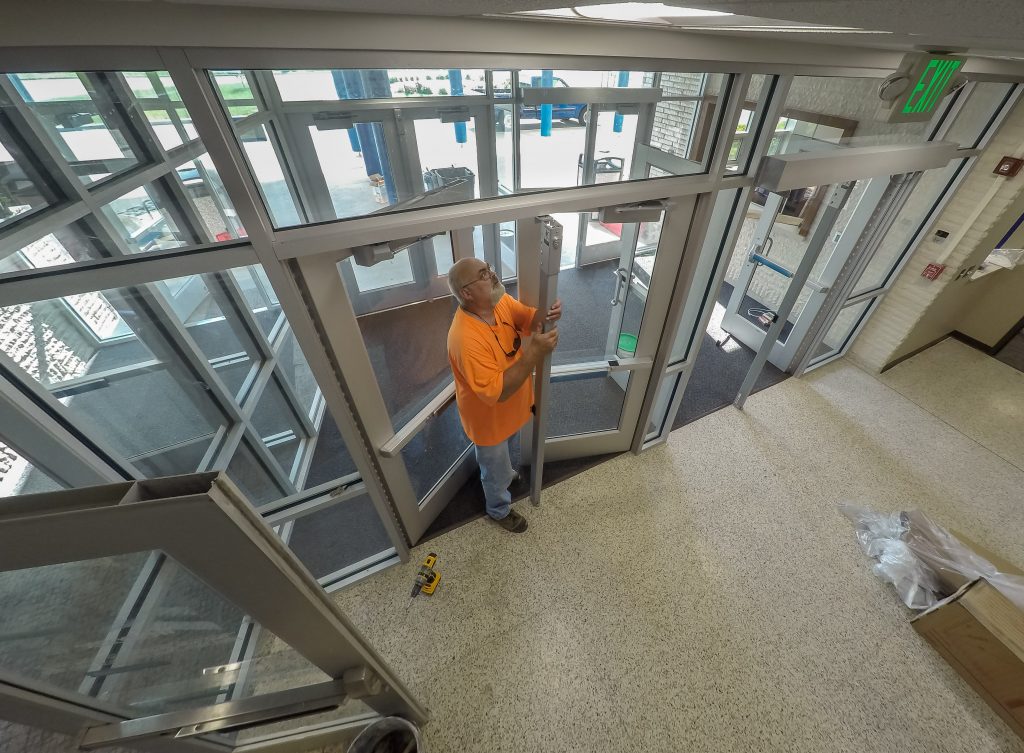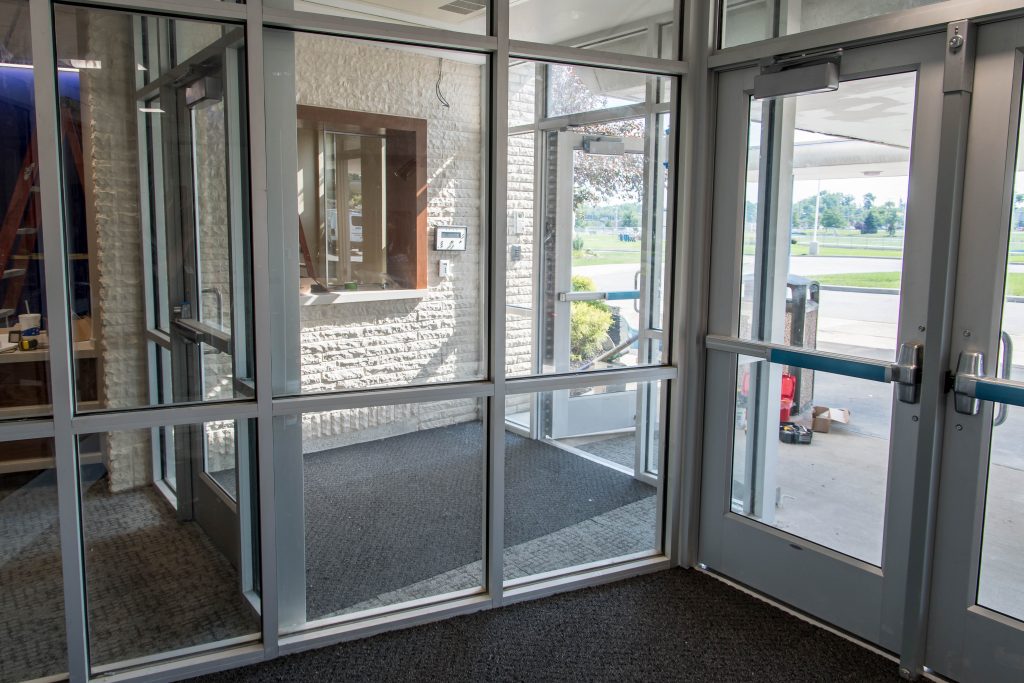August 19, 2018 // Schools
Safety priorities prompt action at diocesan schools
Continuous improvement, community engagement and comprehensive measures of success are often-heard phrases in the K-12 education world. The Catholic Schools Office in the Diocese of Fort Wayne-South Bend has built those principles into robust efforts to ensure security and protection in its educational mission.
“The safety of our students, teachers, staff and parents is a top priority across the diocese,” said Rob Sordelet, principal of St. Charles Borromeo School in Fort Wayne and chairman of the Diocesan Schools Safety Committee. He recently outlined an array of programs, plans and protocols that exist among the diocese’s 39 elementary schools and four high schools. Coordination and ongoing modifications are facilitated by the committee, which was established five years ago by Superintendent Marsha Jordan.

Schools in the Diocese of Fort Wayne-South Bend work together to provide a safe environment for all students, according to St. Charles Borromeo School principal and Diocesan Schools Safety Committee chairman Rob Sordelet. Among the projects currently being carried out to improve student safety are a reconfigured entranceway at Bishop Dwenger High School, Fort Wayne. Staff members will be able to make visual contact with visitors before permitting them to enter the building. Joe Romie
Stemming from a goal of unified approaches in many areas of everyday security, each diocesan school has its own safety committee and crisis plan, plus a checklist of practices that is updated with the Catholic Schools Office annually.
“We work together to provide training, pool resources, provide support to one another and stay on top of current laws and best practices,” Sordelet said. “The topic is on the agenda at all diocesan principal meetings and is constantly being reviewed in all schools throughout the school year.”
He gave two examples of such work currently being carried out. “Schools have reconfigured entranceways; added safety film to windows; purchased hand-held radios for all staff; invited local police, fire and rescue personnel to assist with building assessments; and [strengthened] communication relationships in case of a crisis.”
He added that faculty and staff training has been increased, while the schools have “continued to keep up with ever-changing safety expectations.”
One of the most recent and publicly noticeable changes is the construction of a new entry area at Bishop Dwenger High School, where staff will make visual contact with all visitors before they’re admitted, according to Sordelet.
But that’s just one form of watchfulness. He said each school must have on file a set of updated plans for monitoring and managing various problems. The schools practice lockouts, lockdowns and sheltering in place.
They prepare for fires, tornadoes, earthquakes and gas leaks, as well as needs to seclude or restrain individuals and to relocate and reunify students and other members of the school communities. They practice actions determined under a “Standard Response Protocol” and age-appropriate steps required for students as approved by the U.S. Department of Homeland Security.
Indiana laws also prompt training for educators related to such issues as suicide, child abuse, health threats and bullying. Each school is required to have two on-site staff members trained by the state as safety specialists, and there are other mandates for coaching and additional scenarios.
All schools now have automated external defibrillators and are obtaining “epinephrine pens” for severe allergic reactions.
Sordelet said the 15-member diocesan committee he chairs works to maximize efficient responsiveness across schools of different sizes, in different types of settings, with varied levels of resources and other distinct considerations, all in light of safety factors that are “ever expanding.”
 Preparation for evolving needs must be both a matter of coordination at the diocesan level and engagement at the local level, he emphasized.
Preparation for evolving needs must be both a matter of coordination at the diocesan level and engagement at the local level, he emphasized.
Beyond the requirements for specialization and benefits of centralization, he said parents and others in parishes around the diocese can make meaningful contributions to the Church’s educational commitment — “with financial support, expertise or simple manpower to strengthen the overall safety of the school.”
What can parishioners do, in addition to their prayer for all students?
Sordelet suggested a few features to consider: ongoing investments in dependable hand-held radios for all persons with a school-related function; updated public-address and communication systems; extra security cameras; emergency supply kits for teachers assisting with evacuations and accidents; on-site school nurses to help with student medications and other health matters; and an ample turnout of volunteers serving at various points during the school day.
“Together, as communities, we all want our schools to be as safe as possible,” he said.
The best news. Delivered to your inbox.
Subscribe to our mailing list today.






